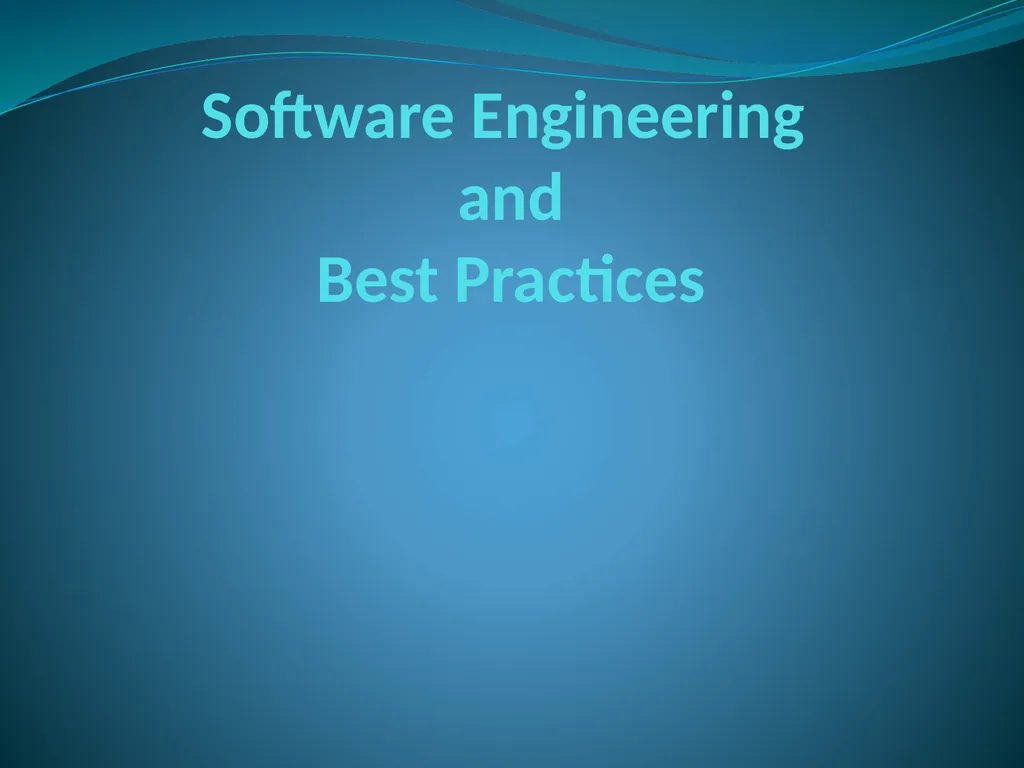Software Engineering and Best Practices
Author : tatiana-dople | Published Date : 2025-05-12
Description: Software Engineering and Best Practices Fundamental Terms Concepts Science and Engineering Discover Relationships that exist but are not found Formulas chemical composition drt calories in fats carbohydrates proteins
Presentation Embed Code
Download Presentation
Download
Presentation The PPT/PDF document
"Software Engineering and Best Practices" is the property of its rightful owner.
Permission is granted to download and print the materials on this website for personal, non-commercial use only,
and to display it on your personal computer provided you do not modify the materials and that you retain all
copyright notices contained in the materials. By downloading content from our website, you accept the terms of
this agreement.
Transcript:Software Engineering and Best Practices:
Software Engineering and Best Practices Fundamental Terms / Concepts Science and Engineering Discover Relationships that exist but are not found Formulas; chemical composition, d=r*t; calories in fats, carbohydrates, proteins; experimentation; Astrophysics – origins of the universe Build Apply principles of science and mathematics to real needs, commodities, structures, products, etc. Software Engineering; Software Development 2 Fundamental Concepts Software Engineering; Software Development Job positions: Software developer Programmer Software engineer Analyst / Programmer Senior … what have you… 3 What is Software Engineering? The process of solving customers’ problems by the systematic development and evolution of large, high-quality software systems within cost, time and other constraints Note: Process, systematic (not ad hoc), evolutionary… Constraints: high quality, cost, time, meets user requirements 4 Analysis of the Definition: Systematic development and evolution An engineering process involves applying well understood techniques in a organized and disciplined way Large, high quality software systems Software engineering techniques are needed because large systems cannot be completely understood by one person Cost, time and other constraints Finite resources The benefit must outweigh the cost 5 Best Practices of Software Engineering 6 Develop Iteratively Control Changes Use Component Architectures Manage Requirements Model Visually Verify Quality Practice 1: Develop Software Iteratively Until recently, developed under assumption - most requirements can be identified up front. The research deconstructing this myth includes work by Capers Jones. (See next slide) In this very large study of 6,700 projects, creeping requirements — those not anticipated near the start—are a very significant fact of software development life, ranging from around 25% on average projects up to 50% on larger ones. 7 8 Look up a definition of ‘Function Points.’ Interestingly, An initial design will likely be flawed with respect to its key requirements. Requirements rarely fully known up front! Late-phase discovery of design defects results in costly over-runs and/or project cancellation Oftentimes requirements change – even during implementation! While large projects are more prone to cost overruns, medium-size/small projects are vulnerable to cancellation. The key reasons continue to be poor project planning and management, shortage of technical and project management expertise, lack of technology infrastructure, disinterested senior management, and inappropriate project teams.” 9 Waterfall Delays Risks 10 R I S K T I M E Integration System Test Code Design Requirements Waterfall risk Iterative Development 11 Earliest iterations address greatest risks Each iteration produces an executable release Each iteration includes integration, test, and assessment!














